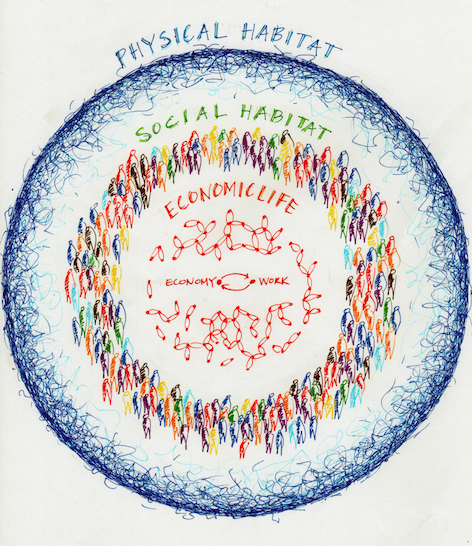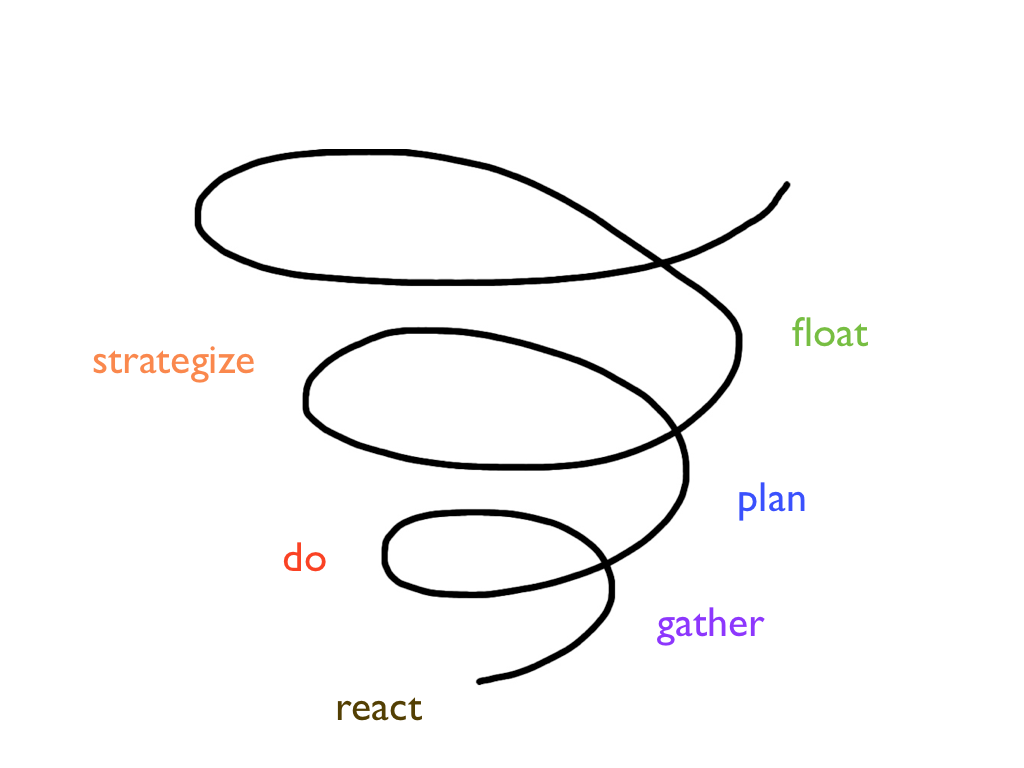In these Nest City posts, I have looked at cities in three ways so far: our impulse to build and gather in cities, our impulse to organize our cities and last, our impulse to thrive as a species. In exploring each of these three impulses, patterns about our cities are revealed that are crucial to understanding how to organize our cities our cities to serve their citizens well – and how to be citizens to serve cities well.
Chapter 1 – The City Impulse
 Building cities as our habitat naturally occurs for us. We work at this every day – psychologically, physically, socially and culturally. Our work, whether paid or unpaid, is always in response to our habitat. We work constantly to think, make and do new things, which changes our habitat and our responses to habitat. And so on, endlessly.
Building cities as our habitat naturally occurs for us. We work at this every day – psychologically, physically, socially and culturally. Our work, whether paid or unpaid, is always in response to our habitat. We work constantly to think, make and do new things, which changes our habitat and our responses to habitat. And so on, endlessly.
Our relationship with our habitat – cities – feeds the evolution of our cities and our habitat. Given this relationship, it is time to build the nest we need.
Chapter 2 – The Planning Impulse
 The overriding purpose of a city is to integrate the needs of its people with its context, to create a habitat in which citizens will survive and thrive. The purpose of planning is to support a city’s efforts to notice, adjust and organize to ensure the city is able to integrate the needs of its citizens with its context.
The overriding purpose of a city is to integrate the needs of its people with its context, to create a habitat in which citizens will survive and thrive. The purpose of planning is to support a city’s efforts to notice, adjust and organize to ensure the city is able to integrate the needs of its citizens with its context.
The city is a dance of voices and values and the act of linear planning is simply a level of organizing that responds to a particular set of life conditions. There is a time and place for linear planning, and life conditions are now emerging allowing us to recalibrate the practice of planning that holds a destination in mind while allowing for learning and adjustment along the way. We are learning to live into a reality in which we recognize that we do not know exactly where we will end up.
Chapter 3 – The Thriving Impulse
Our cities are built by us and for us. We do this to ensure that we survive, yet as we saw in Chapter One, we have a drive to constantly think, make and do new things in our work. The result is our drive to thrive. This drive results in cities. And cities compel us to think, make and do more new things. This is the essence of our evolutionary relationship with cities: an infinity loop.
Spiral Dynamics describes this pattern well: we grow and develop – evolve – in response to our life conditions. 12 intelligences also serve the evolutionary character of cities and our relationship with cities. While they each offer much to understanding cities, they can be summarized in as evolutionary intelligence one useful sentence:
Seeing the whole city as alive, evolving wholes that need nourishment allows us to navigate toward cities that serve citizens well, and citizens that serve cities well.On to Part 2 – Organizing for Emergence
Part 2 of Nest City will focus on four things: destination, journey, emergence and the sweet spot at the intersection. This is the dynamic of how we can set ourselves up to organize ourselves and our habitats well.
My next post will lay out the plot for Part 2 – Organizing for Emergence.
_____ _____ _____
If you are interested in learning more about evolutionary intelligences relating to cities, you will be interested in the Integral City eLaboratory – Co-Creating the Future of the Human Hive.